On February 23, the Center on the United States and Europe and the Strobe Talbott Center on Security, Strategy, and Technology will hold a virtual debate on this topic with several of the scholars participating in this written debate.
As the second anniversary of Russia’s full-scale invasion of Ukraine draws near, the outlook appears bleak: both sides have sustained horrific losses, millions of Ukrainians remain displaced or in exile, and there is no plausible sign of an end to the violence. Western capitals are struggling to supply funds and ammunition to Kyiv, while the Kremlin seemingly draws on limitless supplies and political support from authoritarian allies and continues to pound Ukrainian cities to rubble. Donald Trump, the presumptive Republican presidential candidate, says he would “encourage [Russia] to do whatever the hell they want” to NATO allies that spend insufficiently on defense, while Russian President Vladimir Putin threatens Poland and the Baltics in an interview with Tucker Carlson.
Six Brookings scholars (Aslı Aydıntaşbaş, Michael E. O’Hanlon, Steven Pifer, Melanie W. Sisson, Angela Stent, and Tara Varma) debate the questions Ukraine and its supporters now face:
- Is Russia winning its war against Ukraine? Should the United States and its allies push Ukraine to negotiate with Russia?
- How can the United States and its allies best ensure security and stability in Ukraine and Europe? Should NATO take further steps toward Ukrainian membership at its 75th-anniversary summit in Washington in July?
- What concrete steps should the United States and Europe take in 2024 to prevent a Ukrainian defeat? What would the consequences of a Russian victory be for the trans-Atlantic alliance?
These are hard questions, with no easy answers; the authors disagree with each other, and some of the disagreements remain unresolved. But the one thing we all agree on is: rarely in living memory has so much been at stake, not just for Ukraine, but for Europe and the Western alliance. And, arguably, for Russia too.
– Constanze Stelzenmüller
Is Russia winning its war against Ukraine? Should the United States and its allies push Ukraine to negotiate with Russia?
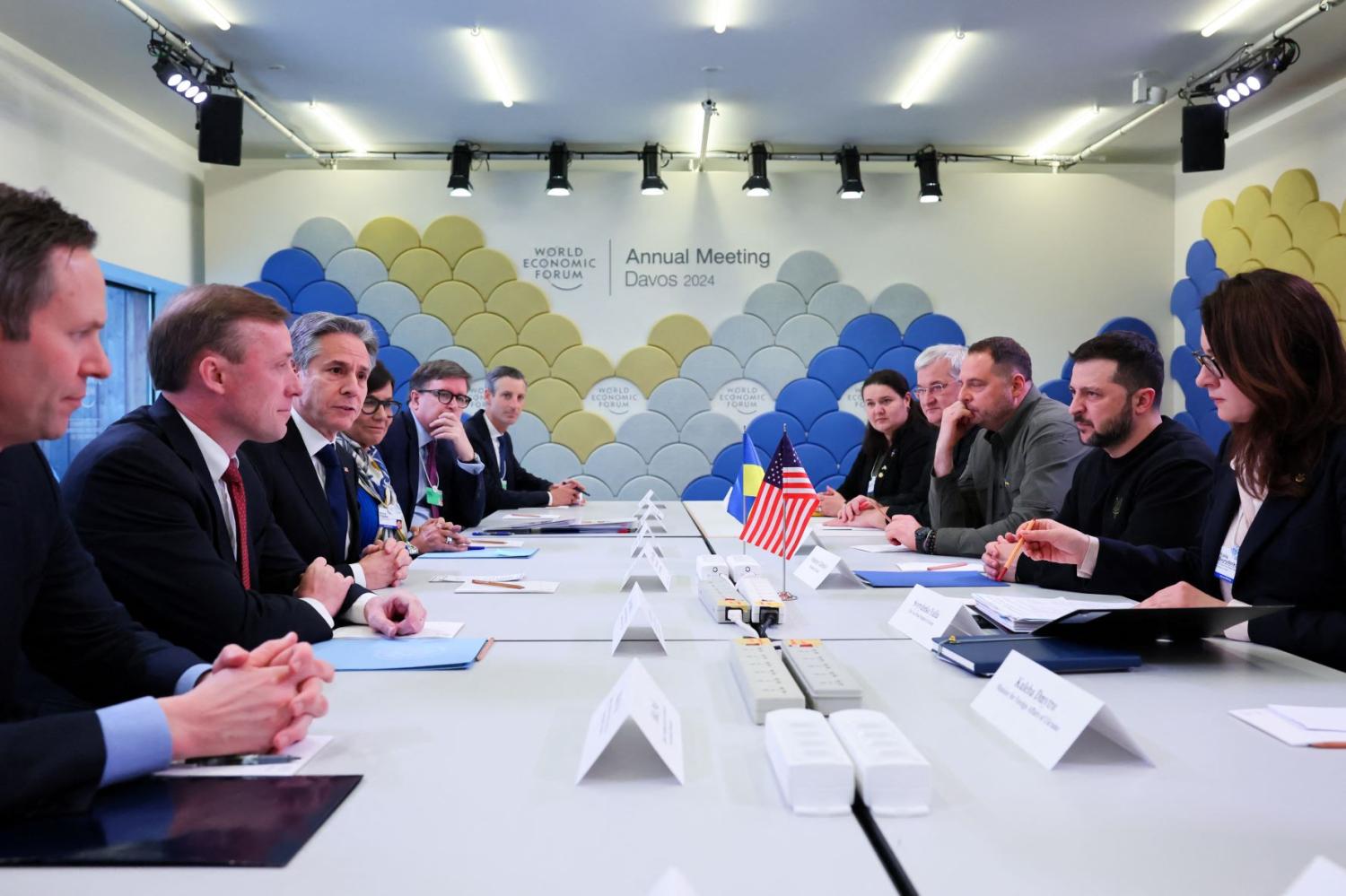
Aslı Aydıntaşbaş
Russia is not winning in Ukraine—but neither is it losing.
Despite early predictions of economic collapse, battlefield exhaustion, and international isolation, Russians have, by and large, managed to muddle through. Economically, the country has avoided a collapse; militarily, it has ramped up weapons production; and diplomatically, in a post-Gaza world, Moscow hardly seems isolated.
Meanwhile, the West’s ability to support Ukraine for “as long as it takes” is increasingly looking doubtful to the rest of the world. The U.S. Congress is handwringing on further aid; Europeans are having difficulty in stepping up their military production capabilities to make a difference on the battlefield; the U.S. public is losing its enthusiasm for supporting the war. The Republican presidential front-runner, Donald Trump, is already signaling that he hardly cares about Ukraine or trans-Atlantic unity.
Given this harsh reality, we must be honest with ourselves and with Ukrainians. The strategic decisions available for the United States are limited, and not confined to two binary choices: either force Ukraine to negotiate with Russia or declare to support it forever. The real strategic opening is everything in-between, involving compromises, half-measures, and half-baked solutions that last for decades.
That’s how wars end—with deeply unsatisfactory results.
NATO allies must manifest their support for Ukraine through bilateral security arrangements but not hide that NATO membership is unattainable for now. They should start thinking about how this war ends and encourage Ukraine to be open to cease-fire talks with Russia, even though Russian occupation of parts of Ukraine continues. And more importantly, they should work with Kyiv on the extensive reforms that will anchor Ukraine to the European Union.
Michael E. O’Hanlon
Russia is not winning the war so far. Its original ambitions of taking over Ukraine and unseating its government were stymied. Even its more modest goals of fully controlling five provinces in Ukraine and keeping the country out of Western institutions appear unlikely to succeed over time. That said, war takes unexpected twists and turns. The North was not yet winning the American Civil War at the two-year mark; neither was the Entente in World War I nor were the U.S./U.K./USSR forces in World War II. Russian President Vladimir Putin still hopes to win through a fracturing of Western political will, a depleting of Ukrainian manpower, and what he (wrongly) considers the Russian people’s superior martial virtues and stoicism. He has a high tolerance for other people’s pain and will keep trying.
It is too soon to push Ukraine to negotiate. For one thing, there is no other willing party to negotiate with. For another, even if my idea (with Lise Howard) of an alternative security architecture for Ukraine proved acceptable to Moscow, there is no common sense of territorial compromise. (Our idea would envision an Atlantic-Asian Security Committee that oversaw the permanent stationing of numerous Western trainers, including Americans, on Ukrainian soil—partly as a tripwire against Russian aggression—with the additional provision that someday, a post-Putin Russia might be invited to join too. Ukraine understandably wants all its land back; Russia wants at least what it has now (about 17 percent of pre-2014 Ukraine). Someday, we all may have to settle for something like the current status quo as a cease-fire line. But that would be regrettable for the sake of global order and of human decency and is premature. Better that some Ukrainians first come to such an idea themselves, and at least some Russians, too.
Steven Pifer
Russia is not winning. Its military has suffered 315,000 casualties, according to CIA Director William Burns; others place Russian losses at a higher level. In addition, Russia has lost 2,600 main battle tanks, some two-thirds of its modern force, and is having to draw from stocks of 60-year-old tanks. The Russian Navy had to withdraw most of its Black Sea Fleet warships from occupied Crimea. For all that, Russia occupies little more Ukrainian territory than it did at the beginning of 2023 and far less than it did in the first half of 2022. To be sure, Ukraine faces a difficult year in 2024 and will find itself largely on the defensive. However, the past two years have shown how costly, and often how futile, offensive operations can be for the Russians.
A key question for Kyiv will be the continuation of European and U.S. support. That can keep Ukraine in the fight. The West should understand what it has at stake: a Kremlin emboldened by victory would pose an even greater threat to Europe.
The United States and its allies should not press Ukraine to negotiate. Nothing suggests that Moscow is prepared to discuss anything but its own terms: replacement of the government in Kyiv, demilitarization, neutrality, and acceptance of “geopolitical realities,” that is, Russia’s absorption of Crimea, Donetsk, Luhansk, Zaporizhzhia, and Kherson—in other words, a capitulation that would leave the remainder of Ukraine open to future assault whenever Moscow chose. Ukrainians will not and should not be expected to accept that. The West should instead provide Kyiv with what it needs to drive the Russian military out and/or secure a settlement on terms Ukraine and Ukrainians can accept.
Melanie W. Sisson
Russia is not winning its war against Ukraine. Experts on post-Soviet Russia’s use of force in its foreign policy explain that Putin’s strategic objective is to prove that there is a Russian sphere of influence that must be accepted and respected. Russia’s war has failed to achieve this in every regard. It has revealed more military weaknesses than strengths. It has galvanized Ukrainian nationalism. And it has firmed rather than frayed the West’s attachment to Ukraine. None of this diminishes the importance of Ukraine’s ongoing fight for its rightful territory, but progress in military battles and the war’s outcome should not be conflated.
Western leaders and commentators acknowledge as much when calling Russia’s attack on Ukraine an attack on the future of Europe. Although the West continues to promise material support for Ukraine’s war effort, it has not yet arrived at a common vision for that European future and for Ukraine’s standing within it.
To contend that the United States and its allies should push Ukraine to negotiate with Russia under these terms is unreasonable. Ukrainian decisionmakers can only be expected to negotiate if they believe that continuing the fight is fruitless, or that ending it is a necessary step on a plausible path toward a desirable future. In the absence of either material exhaustion or confidence that negotiation offers something to gain, it should come as no surprise that Ukrainians will prefer to continue to fight for what they have left to lose.
Angela Stent
Russia is not winning the war with Ukraine but has managed to capture small amounts of Ukrainian territory since Kyiv’s disappointing 2023 counteroffensive. Moscow is conducting a war of attrition with heavy casualties and now has access to artillery and missiles from North Korea and drones from Iran. It will have to continue mobilizing men if it is to launch another offensive in 2024. Ukraine is not winning the war either and will focus on defense in 2024, perhaps launching another counteroffensive in 2025. It has recently been attacking inside Russian territory and bombing energy facilities. However, if U.S. financial assistance and weapons dry up in 2024, this would increase Russia’s chances of defeating Ukraine, even if Europe provides financial assistance and more advanced weapons.
The United States and its allies should not push Ukraine to negotiate with Russia. The Kremlin has shown no interest in negotiations unless Ukraine accepts the incorporation of four “annexed” territories into Russia—territories that Russia does not fully control. Putin still says that the goal of his “special military operation” is to “denazify” (i.e., regime change) and demilitarize Ukraine and ensure that it ceases to exist as a country. Ukraine is fighting an existential war for its survival as an independent, sovereign state. Even if there were a temporary cease-fire, Russia would likely regroup and relaunch hostilities. Serious negotiations can only begin if Russia moderates its war aims. But Putin is betting on elections in the United States and Europe bringing to power leaders who will no longer support Ukraine.
Tara Varma
Two years into the war, the good news is that Russia isn’t winning—at least not in terms of what a decisive victory would be: clear military advantage leading Moscow to win over Ukrainian territory, which is one of its key objectives. One should note that Russian self-avowed goals in Ukraine have evolved since the invasion in 2022, though Putin insists they remain the same, namely “denazification, demilitarization and [Ukraine’s] neutral status.” The initial full-scale invasion stemming both from the east and the north indicated a willingness not only to take Kyiv but actually the whole of Ukraine.
The not-so-good news coming from Kyiv is that the counteroffensive launched in the summer of 2023 hasn’t delivered the expected result of taking back Russian-occupied territory in the east. The strain on the Ukrainian army and population is enormous—but so is the responsibility of the United States and Europe to keep providing Ukraine with the weapons and funds it needs. While U.S. support is being weaponized in the context of the 2024 presidential campaign, Europe cannot afford a similar situation to happen. It has an existential interest in Ukraine prevailing in the war and has approved accession negotiations for Ukraine into the European Union. Americans and Europeans have also been resolute and clear that it is for Ukraine to set the terms of negotiations and/or victory. While the West supports them diplomatically, financially, militarily, and materially, Ukrainians are the ones on the frontlines and must remain the sole decision-makers on future steps.
How can the United States and its allies best ensure security and stability in Ukraine and Europe? Should NATO take further steps toward Ukrainian membership at its 75th-anniversary summit in Washington in July?
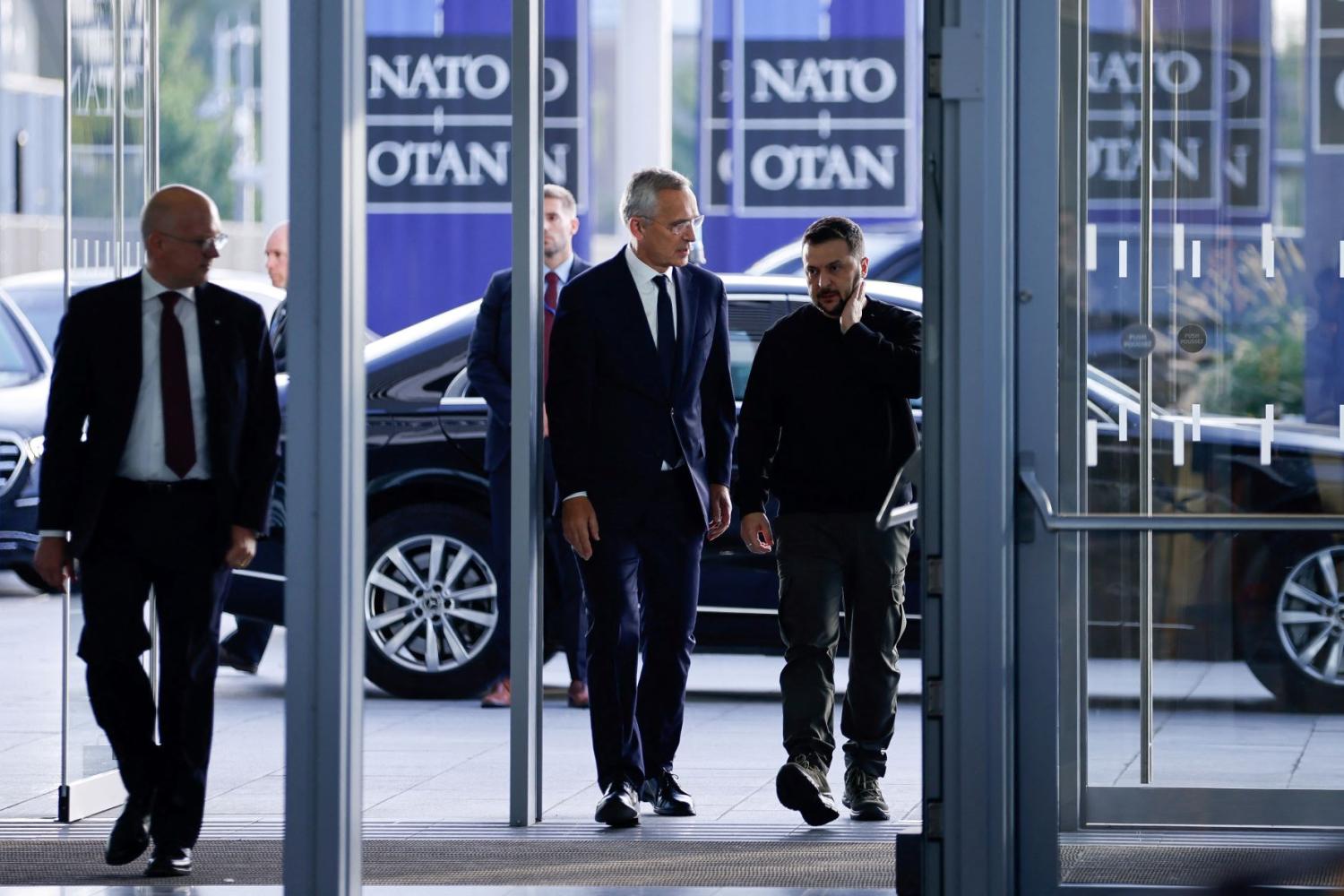
Aslı Aydıntaşbaş
The best way for the United States and allies to ensure stability and security in Ukraine is to provide the assistance necessary for Ukraine to defend itself against Russian aggression—now and in future years.
One can imagine several mechanisms for providing that assistance, from purely bilateral and ad-hoc assistance, as in recent years, through more formal bilateral arrangements, such as the recently concluded treaties between the U.K. and Ukraine, all the way toward partial or full NATO membership.
The question of which arrangement—or which combination of arrangements—will best serve the needs of Ukraine, the United States, and their allies remains an open one. The NATO summit is an important opportunity to explore that question and to feel out the NATO allies’ various views.
At the same time, it will be important not to confuse the question of NATO membership with the necessity of helping Ukraine defend itself. It is but one mechanism for doing that, and not necessarily the best one. It is doubtful that the membership path will militarily deter Russia, which claims it is already fighting a NATO-backed power. The question is also certain to create divisions within the alliance at a critical time, as powerful member states like Germany and the United States are reluctant to walk down that path.
The United States and its allies should explore all avenues to support Ukraine, all the while recognizing their long-term interest in promoting security and stability in Ukraine.
Michael E. O’Hanlon
I believe that it is too soon to say whether NATO membership for Ukraine will provide the best path forward for ending this terrible war on acceptable terms for the people of Ukraine and preventing future attacks by Russia against Ukraine even after this war is over. Therefore, I oppose new binding steps toward NATO membership for Ukraine this coming July.
Ukraine deserves an anchor in Western security institutions as soon as possible. However, insisting that NATO be the vehicle or architecture ensures non-negotiability with Moscow. (Please check out CIA director and former U.S. ambassador to Russia Bill Burns’s memoir for a similar view.)
NATO has not threatened Russia and will not. Moscow’s claims to the contrary are specious. But Putin and many other Russian hardliners believe otherwise—even if they do not really think that NATO will invade Russia, they fear the precedent of “colored revolutions” and resent the Western alliance system’s encroachment into a space they consider crucial to Russia’s security. They are also often petty and vindictive in their worldviews. These facts do not justify Russia’s heinous attack against Ukraine. Yet they should nonetheless inform our strategic calculus going forward.
With Lise Howard of Georgetown, I have proposed an alternative security architecture for Eastern Europe that would, among other things, put U.S. boots on the ground in Ukraine indefinitely, as a form of tripwire and deterrent. An idea like that should remain in the mix for now. I believe it is more likely to help stabilize the situation in the Russia-Ukraine region than would a tentative, slow-motion path to NATO membership.
Steven Pifer
The immediate need is for the United States and its allies to sustain the flow of arms to help Ukraine prevail, as G7 and other countries agreed at and since last July’s NATO summit in Vilnius. In the longer term, Russia’s actions have shredded the existing European security system. The successor to that system will have to focus on containing and defending against Russia, at least until the Kremlin adopts a different approach toward its neighbors. Ukraine needs to be a part of that system. A Ukraine left on its own, even if armed by its Western partners, would still pose a tempting target for further Kremlin aggression.
There is no consensus within NATO now for extending Ukraine a membership invitation. The allies should instead use the alliance’s 75th-anniversary summit in Washington to initiate accession talks with Kyiv, with a view to extending an early invitation to join. It will be easier for NATO to bring Ukraine in when the current war is over than while the fighting is ongoing. Once Ukraine is a member, the onus for new hostilities would rest with Moscow, and the Kremlin would have to calculate the risks and costs of going to war against NATO as well as Ukraine. In the meantime, launching accession talks would put Ukraine on a definitive path to membership, bolster morale in Kyiv, and signal NATO’s long-term commitment to Moscow. If at some point Ukraine’s leadership decides to negotiate, accession talks would strengthen its bargaining hand.
Melanie W. Sisson
The West needs to make clear to Ukraine, even if only privately, that NATO membership will not be offered at any time in the foreseeable future. The security and stability of Ukraine are neither necessary nor sufficient conditions for the security and stability of Europe. Were it otherwise, Ukraine would have become a NATO member a long time ago.
Yet Western leaders very much have framed the war in these terms, effectively entangling efforts to end the war with efforts to design a new security architecture for the whole of the European continent. Doing so, together with ongoing promises of material support, suggests to Ukraine that if it continues to fight then it will gain the benefits of entry into a newly architected West. Yet the currently architected West provides Ukraine with no concrete information about what those benefits will be and when, even roughly, it can expect to receive them. Far from helping to put Ukrainian leaders in the strongest possible position at the bargaining table, the West’s strategic confusion is instead impeding the process of getting to the table at all.
If U.S. and European leaders believe there is a need for a new continental security architecture, then by all means they should set about designing one. But that matter needs to be addressed apart from working with Ukraine to devise a postwar relationship that increases its probability of being a lasting, autonomous state. This is what the military fight is now about—not the future of Europe, but the future of Ukraine. It should be treated as such.
Angela Stent
Russia’s full-scale invasion of Ukraine showed that deterrence failed, despite Western warnings to Putin prior to February 24, 2022, of the consequences of launching a war. The Western alliance’s key challenge going forward is creating a more effective deterrent against Russian aggression. So far, Russia has not attacked any NATO member, indicating that the Kremlin understands that NATO would invoke Article 5 and counterattack. As long as Russia’s war on Ukraine continues, the United States and its allies should continue arming Ukraine and supporting it financially to enable it to continue fighting. NATO countries should also follow the U.K.’s lead in concluding bilateral security agreements with Kyiv.
Once the war is over, the United States and its allies will face the difficult question of whether it is possible to rebuild a Euro-Atlantic security system that includes Russia. As long as Putin, or a successor who shares his worldview and desire to recreate the Russian Empire, is in power, it will not be possible to include Russia. In the longer run, under a different leadership, it may be feasible. In the meantime, the best way to ensure security and stability in Europe is to redouble the containment strategy that worked during the Cold War and to support Ukraine’s integration into European structures.
If Ukraine had been a NATO member in 2022, Russia would not have invaded. Even though NATO membership cannot happen while the war rages, Ukraine deserves a path to membership. The Washington summit should discuss a road map that provides Ukraine with concrete guidelines and milestones toward membership.
Tara Varma
The United States and Europe have an intrinsic interest in Ukraine winning this war. Funding to support Ukraine militarily and economically has to be secured on both sides of the Atlantic. Discussions are ongoing in the U.S. House of Representatives. The White House has reiterated its belief that a supplemental package on national security would be passed. This package is expected to provide $60 billion to support Ukraine’s defensive war against Russia. The EU finally passed its $54 billion aid package during the last European Council meeting. Last December, the EU decided to open accession negotiations with Ukraine and Moldova, thus intertwining Ukraine and Europe’s futures. With integration will come societal, economic, and judicial reforms that will further foster the resilience of Ukraine and its people. The United States explicitly indicated that it, too, would be safer with a stable Ukraine being a full member of Euro-Atlantic institutions.
NATO is on the verge of adding one new member, Sweden, after Finland last year. Last July, the NATO secretary-general said that member countries had agreed Ukraine would eventually join the alliance once the war is over. While the war is ongoing, absent the membership proposal, several European countries, including the U.K., Germany, and soon France, have committed to providing security guarantees to Kyiv. France and the U.K., the two European nuclear powers, should go beyond financial commitments and offer to provide Kyiv with a bilateral nuclear umbrella, thus outlining the beginnings of a new European security order.
What concrete steps should the United States and Europe take in 2024 to prevent a Ukrainian defeat? What would the consequences of a Russian victory be for the trans-Atlantic alliance?
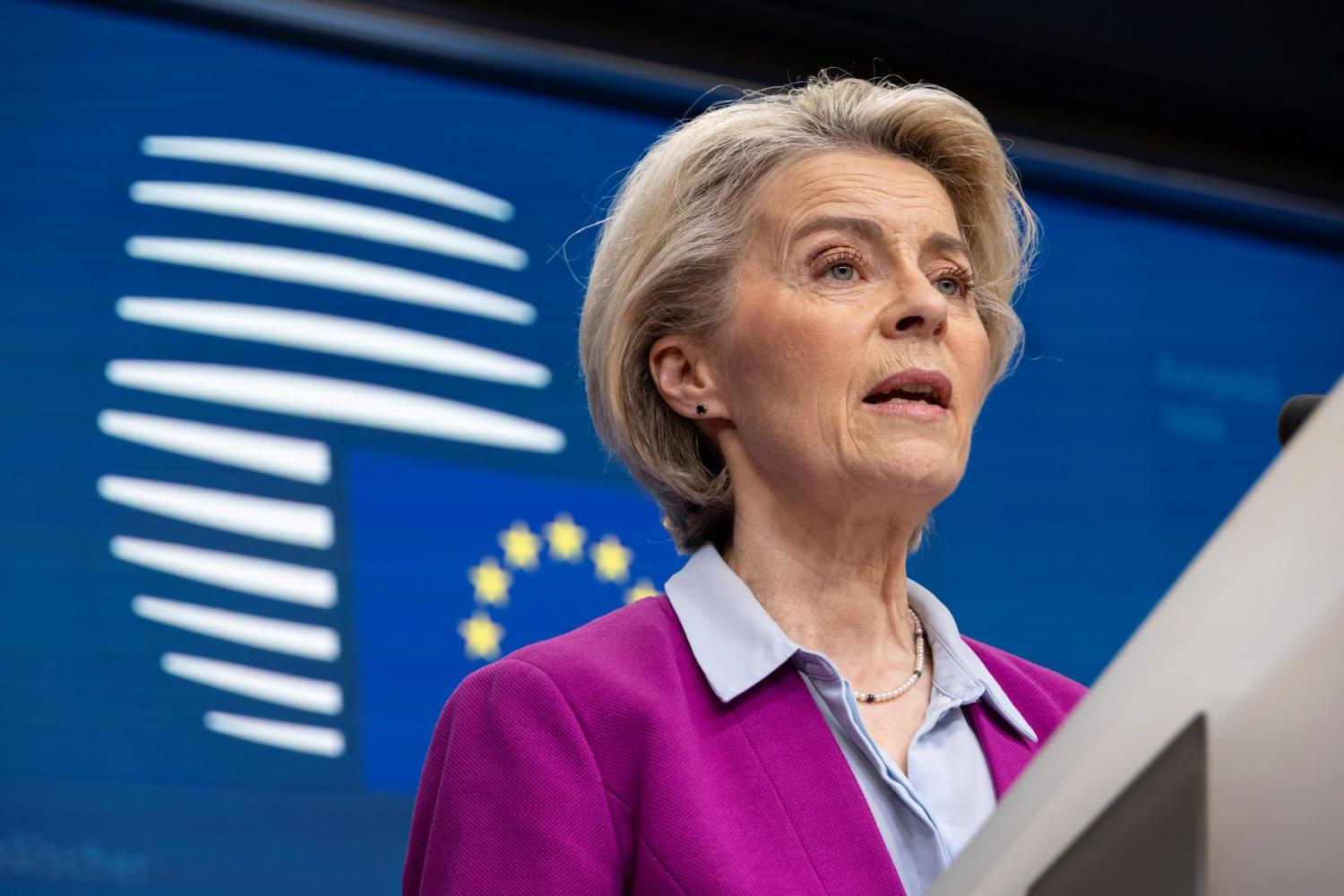
Aslı Aydıntaşbaş
A Russian victory in Ukraine would have significant implications for European security—with ripple effects in wider Europe and even parts of the Middle East. It would make countries on NATO’s eastern flank even more anxious about their long-term security—leading them to seek greater U.S. assurances to compensate for waning faith in NATO’s credibility—while encouraging Russia to be more assertive in the Black Sea, the Baltics, and the Eastern Mediterranean.
But the more dramatic impact would be on the political front. Russia’s victory would be viewed in the Global South as NATO’s defeat, reinforcing the Russian propaganda that the West is in terminal decline and a new world order is emerging. From India to the Middle East, the United States and allies would pay a hefty price for the erosion of prestige. Middle powers would be more dismissive of what is left of the rules-based order, eyeing transactional deals with Moscow and Beijing to expand their regional agendas. In Georgia, Armenia, Moldova, and Bosnia, pro-Western sentiments would be crushed by heavy-handed Russian political meddling. Elsewhere, hedging would be the name of the game.
Inside Europe and the United States, political fragmentation and populist surge would accelerate in an age of self-doubt.
The way to prevent this scenario is to help Ukraine defend itself against Russian aggression while seeking openings to end the war in a way that preserves Ukraine’s sovereignty and long-term sustainability. Ukraine must be in the best negotiating position when the war winds down, but more importantly, it must not be this conflict’s loser.
That depends on us, as much as it does on Ukrainians.
Michael E. O’Hanlon
It is too soon to lower expectations for what the United States and allies are doing to help Ukraine. We should pour it on through 2024, providing virtually all the types of weaponry Ukraine may request over the next 15-to-18 months, with the hope that Ukraine can break the military logjam sometime this year or early next. Part of the case for additional patience is that it typically takes modern military units at least a couple of years to absorb and train on new weapons. Ukraine has not yet had a fair chance to do so.
However, I would distinguish my approach from U.S. President Joe Biden’s vow to help Ukraine “for as long as it takes.” The United States should plan to reassess its strategy in 2025, as would be expected for a major national security issue early in the new term of a just-elected president (whether Biden or Trump or someone else). If the war remains largely stalemated then, a fallback approach should be considered. It would presumably center on the ideas of helping Ukraine protect whatever territory it then holds, recover economically, strengthen its defenses for the future, and be anchored to Western institutions. But it is too soon to accept territorial compromise now, or to pressure Ukraine to do so—and in the process to reward Russia at least partially for its aggression.
Russia is a long way from winning this war outright; Ukraine has defeated the majority of Russia’s most ambitious goals already. But if somehow Russia does conquer Ukraine or overthrow its government, NATO would have to assume that its own eastern-frontier countries were also in danger. That would be an extremely fraught outcome for future U.S. and Western security policy, while substantially raising the risk that we could ourselves be at war with Russia in the future.
Steven Pifer
Ukraine will be largely on the defensive for much of 2024. The first priority is to provide the Ukrainians with as many artillery shells and air defense systems as possible. Second, the United States and Germany should send longer-range ATACMS and Taurus missiles, enabling Kyiv to strike logistics, command, and other targets anywhere in Russian-occupied Ukraine. Third, the West should help Ukraine build forces for future offensive operations.
At home, the United States and Europe must expand their defense production capabilities, both to assist Ukraine and rearm their militaries. To increase pressure on Moscow, the West should threaten and, if necessary, sanction third countries that transfer Western high-tech products to Russia. It should also take steps to reduce the revenues Russia receives for its oil and gas exports by, for example, shutting down Russia’s “shadow fleet” of oil tankers that evade the G7 oil price cap.
Were Russia to defeat Ukraine, NATO would have to worry about what an emboldened Putin might do after digesting the victory and rebuilding the Russian armed forces. Would his ambitions extend to Moldova or even the Baltic states, all once part of the Russian Empire? NATO would have to increase its defense spending and military presence on its eastern flank. While most analysts discount Russian military action against a NATO member such as Lithuania, most analysts five years ago would have ruled out the possibility of the 2022 Russian invasion of Ukraine. It would be a mistake to underestimate Putin’s ambitions, particularly given his knack for miscalculation.
Melanie W. Sisson
The United States and Europe should not seek “defeat” or “victory” for either Russia or Ukraine. Doing so is a formula for prolonging the violence. It is also paralyzing the development of a strategy for the relationships Western countries—individually and together—are willing to have with both belligerents in the future.
U.S. and European strategy must instead be designed to provide Ukraine with the information it needs to decide when to seek negotiations, and which compromises it is, and is not, willing to make at the table. This will require the United States and countries in Europe and Asia to work with Ukraine on plans for Ukraine’s economic reconstruction. These should not be premised on EU accession; the process is too long, and the outcome too uncertain. The West also will need to make decisions about how to structure ongoing defense cooperation. This should not be premised on ensuring Ukraine’s long-term security against another Russian attack; meeting this standard is impossible, and it is not necessary to establish near-term stability.
The United States and Europe must also try to shape Russia’s incentives to negotiate. Calibrated sanctions relief, clarity that Ukraine will not be a NATO member at any time in the foreseeable future—even if communicated only privately—and signals that Russia will be part of the continent’s future security architecture are all viable means of doing so. The United States and Europe should not allow their distaste for these options, and their loathing of Putin, to come at the expense of Ukraine getting to a better future, faster.
Angela Stent
The most important, concrete steps that the alliance can take to prevent a Ukrainian defeat are to keep supplying Ukraine with the money and weapons it needs to continue fighting Russia. The European Council has finally managed to overcome Hungary’s veto and has voted to provide Kyiv with nearly $54 billion over the next four years. This will enable the Ukrainian government to continue functioning and to pay pensions. Europeans are also supplying some weapons, although German Chancellor Olaf Scholz has vetoed the export of Taurus missiles, thus depriving Ukraine of a much-needed means to combat Russian air superiority. But the United States is the key country for weapons and funding. The U.S. Senate passed a bill on February 12 approving $95 billion in assistance for Ukraine, Israel, Gaza, and Taiwan, having separated the Ukraine assistance from the border security provisions in the initial supplemental bill. Seventy Senators voted in favor, including many Republicans. However, the bill faces an uncertain fate in the House, where MAGA Republicans are determined not to fund Ukraine. If the U.S. House fails to pass the supplemental bill that would provide $60 billion to Ukraine and if the most advanced weapons like the F-16 fighters do not arrive in the quantity that Ukraine needs, then the consequences for Ukraine would be very serious. Congress’s failure to pass the bill could hasten Ukraine’s defeat.
A Russian victory would shake the alliance to the core. Once Russia has recovered and rearmed, it could well set its sights further West, threatening the Baltic states and Poland. A Russian victory could lead NATO to redouble its containment strategy and seek to find enhanced ways to deter Russia from further aggression. Alternatively, a Russian win might lead to greater fissures within the alliance, with states like Hungary, Slovakia, Greece, Spain, and Italy reconsidering their relationship with Russia and whether they need to accommodate it more going forward.
Tara Varma
The consequences of a Russian victory in Ukraine cannot be overstated: it would shatter the current European security order for good and convince Putin of our weakness and powerlessness to defend our interests. In addition to Ukraine falling, with dramatic consequences for its population, the rest of Europe and possibly NATO member states would be at risk of an attack by an emboldened Putin. An insecure Europe is not in the United States’ interest—politically, economically, militarily, or otherwise. Other rival powers would also draw their own conclusions from such a development.
In 2024, the United States and Europe must reaffirm their long-term, sustained support of Ukraine through the increase of financial, humanitarian, material, and military aid. The European Council’s February 1 decision to grant $54 billion in aid is welcome. But Europe and the United States have to go beyond that and accompany Ukraine in the next phases of the war as Putin relentlessly continues to attack the country. Burden-sharing will be on the agenda at the Washington NATO summit. The summit provides an opportunity for reinforced EU-NATO cooperation. Indeed, there is scope for NATO and the EU to better coordinate their efforts to ramp up defense production in Europe. The complementarity between the two is clear: NATO is the go-to coordinating forum and the EU is endowed with financial instruments and the industrial toolbox that can incentivize defense industries in Europe.
This should be our priority as we seek to protect Ukraine and provide it with all the equipment and assistance it needs. A strong and stable Ukraine is in Europe’s and the United States’ interests.
-
Acknowledgements and disclosures
The authors would like to thank Alexandra Dimsdale and Adam Lammon for editing and Rachel Slattery for layout.








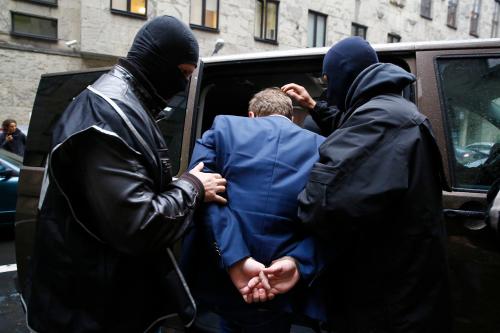
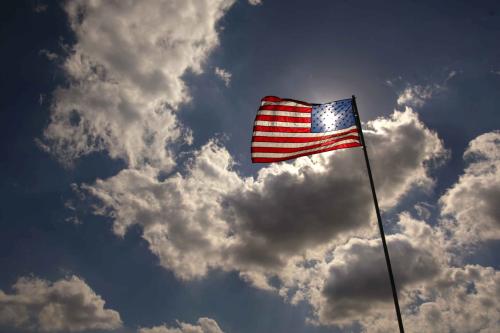

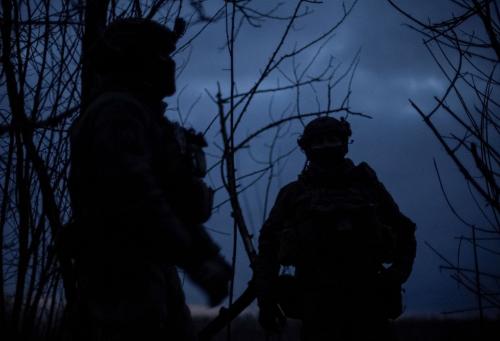
Commentary
Does the West’s Ukraine policy need a reality check? A Brookings debate
February 15, 2024